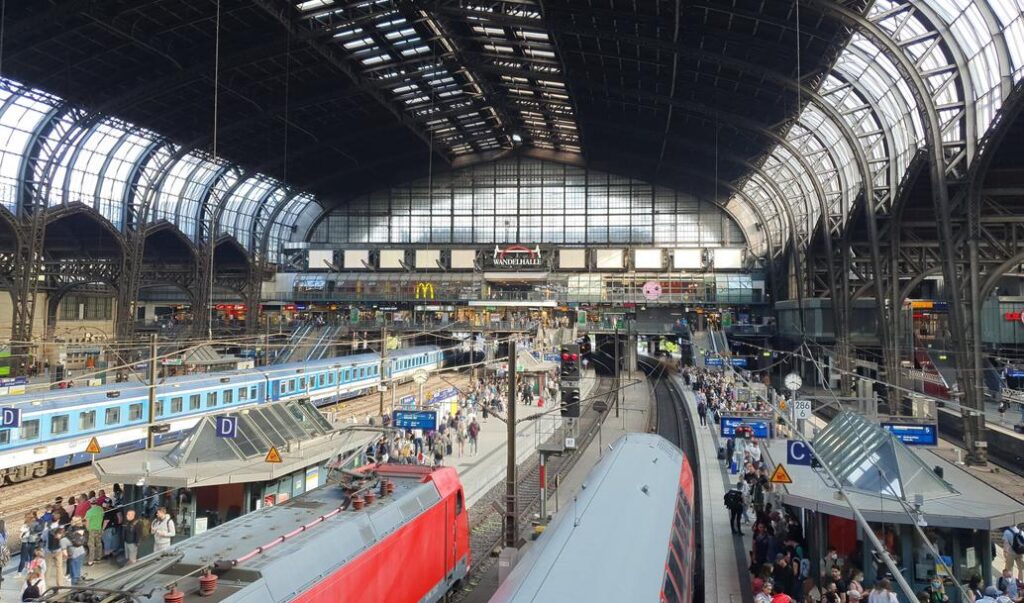
I’ve been traveling quite a bit by train in Germany lately and I take from the press that German network operators have made some effort to improve the on-train network experience. And indeed, the experience on a recent trip from Cologne to Hamburg was a lot better compared to what I remember from the past.
While the fast ICE trains in Germany have Wi-Fi on board by now, I’m not very much interested in it, as it’s throttled and the amount of data is limited. Fortunately, ICE trains are also equipped with cellular repeaters, so I can tether to my phone for Internet connectivity. Over the course of the four hour trip, a ping to a server on the network gave me a success rate of 95%. The missing responses are not randomly distributed, but mostly due to coverage holes along the track. In other words, most applications I use worked well.
Working on servers over an ssh connection, for example, is one of the most important things I do, even while traveling. Here, of course, coverage holes can be felt immediately. But fortunately, there were few and even fewer of them take longer than 15 to 20 seconds. So while not ideal, I could get my work done. Also, for any critical operations, I use a remote tmux session. Thus, even if the connection were to drop (which it never did during the trip), the current command would continue to run instead of timing out, and I could reconnect to the server later without loosing any data.
Over the course of the four hour train trip, I’ve also done two voice conference calls, each over a course of one hour. This has also worked surprisingly well. The speech quality in downlink was mostly ok and there were only some spots with robotic voice or short outages. I’m not sure how the uplink would have sounded, as I was mostly listening while in those calls. But as I said above, there was the occasional 15-20 seconds outage so I would be hesitant to schedule conference calls in which I would have to contribute a lot.
When it comes to web browsing and email, the occasional outages are almost not noticeable, as most of the time, information is consumed passively after download. Not sure about video services, that’s perhaps something for another trip.
And a final application that worked well: A remote VNC desktop session to a remote server to get a crashed remote virtual machine with Windows inside running again.
You might be wondering why I haven’t talked about the datarate in the post so far and the reason is simple: Most of the applications I use require relatively little bandwidth and everything felt snappy enough so I didn’t care. And for those multi gigabyte downloads and uploads I need to do occasionally… Well, usually those data transfers are not time critical at all, so they are better done while being stationary with good network coverage anyway.
So overall, I’d rate this as a very good experience, and, according to the press release linked to above, things will improve further over time. So let’s revisit the topic again in 2026.